Take your manga drawings to the next level with amazing outfits and creative costumes. It just takes two details—wrinkles and shadows.
In How to Draw Clothing for Manga, you’ll discover how adding a tuck here, a gather there, and hiding some areas in shadow will take your drawings from flat sketches to fantastic illustrations.
What you’ll find inside:
- Basic techniques for drawing a variety of fabric details, including pulled wrinkles, gathered folds, tucked shapes, and more! Plus, learn how to express the differences between stiff, thick fabric and soft fabric with drape.
- 35+ outfits shown side by side with modeled photos to easily break down exactly what to draw for a realistic finished look. From slim-fit tees to skirts that twirl, every style is covered across all genders.
- Practice line art to get you started mastering wrinkles and shadows before adding details to your own work.
With hundreds of sample illustrations and step-by-step guidance, this is your must-have guide to drawing clothes and costumes for your manga characters. What are you waiting for? Grab your supplies and get started drawing with style!
Read more
162 reviews for How to Draw Clothing for Manga: Learn to Draw Amazing Outfits and Creative Costumes for Manga and Anime – 35+ Outfits Side by Side with Modeled Photos
Add a review
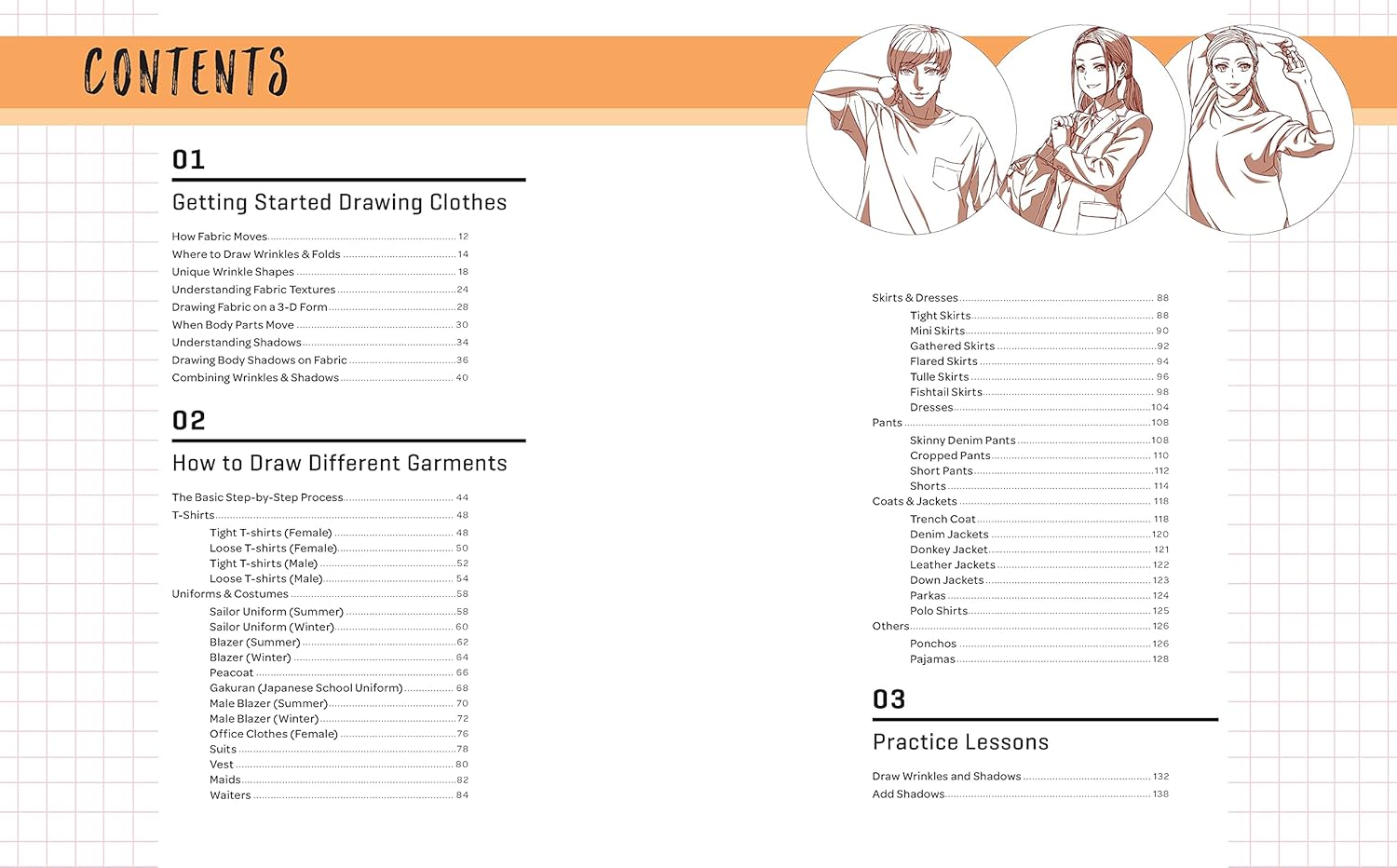
Original price was: $24.99.$21.95Current price is: $21.95.

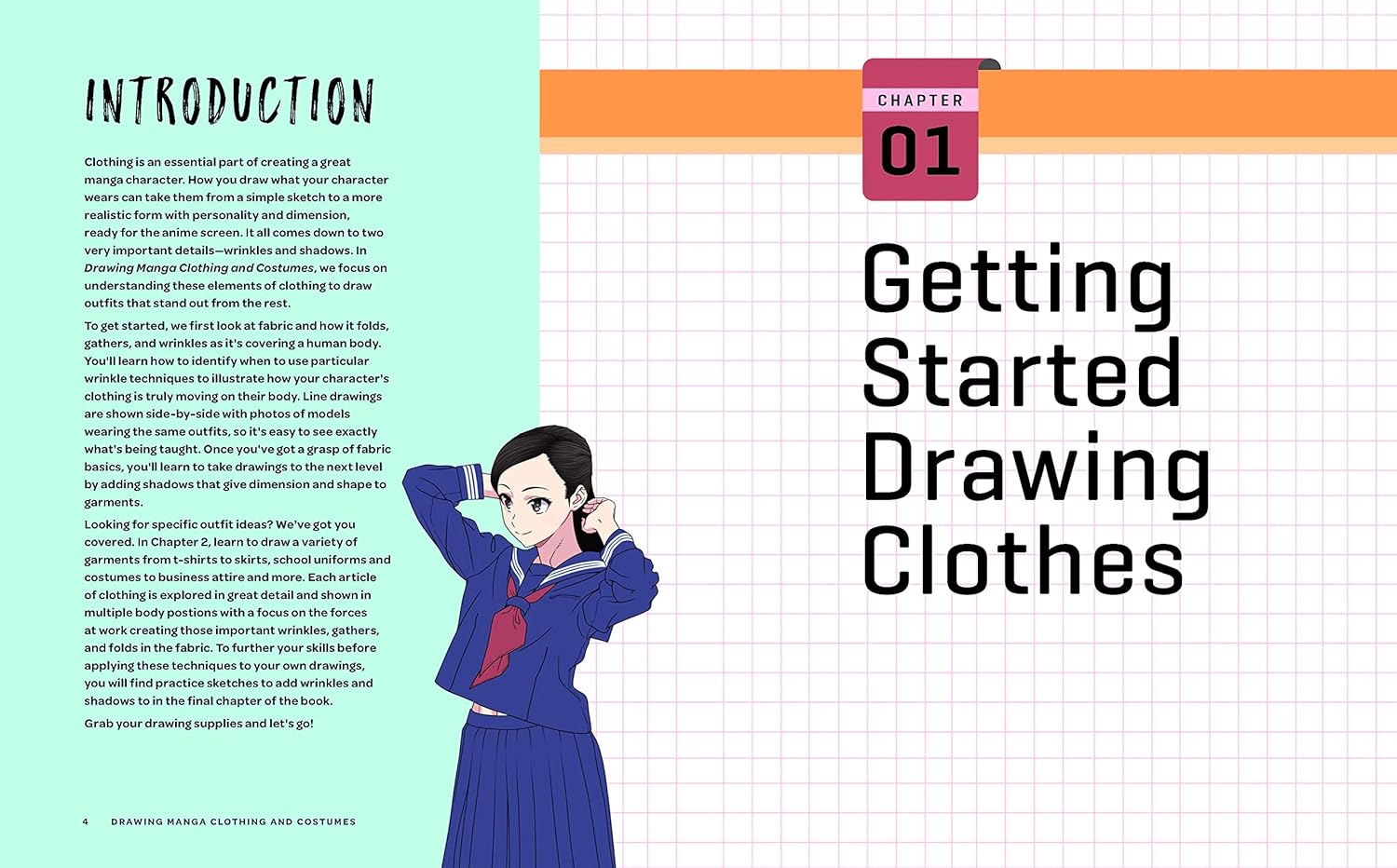
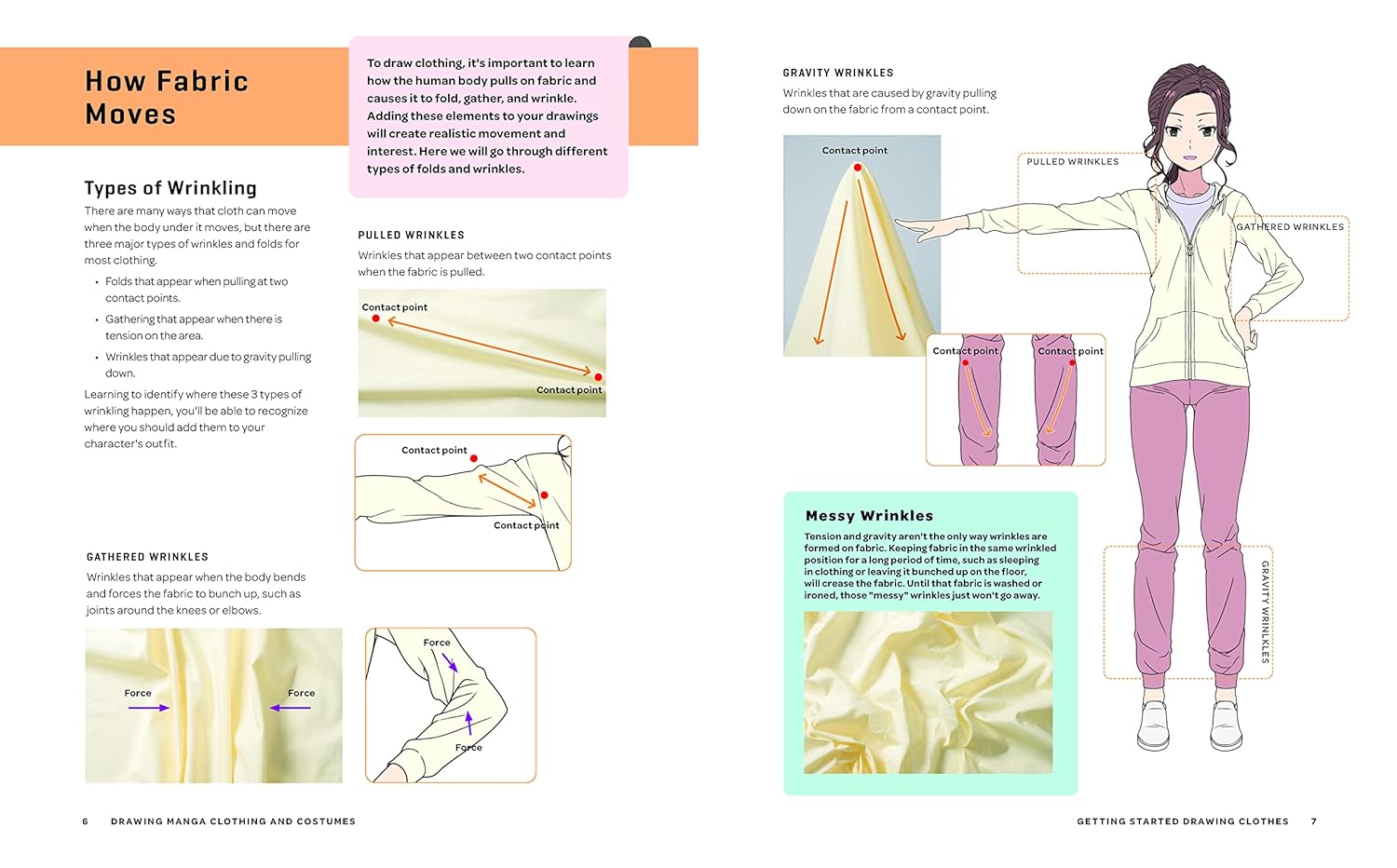
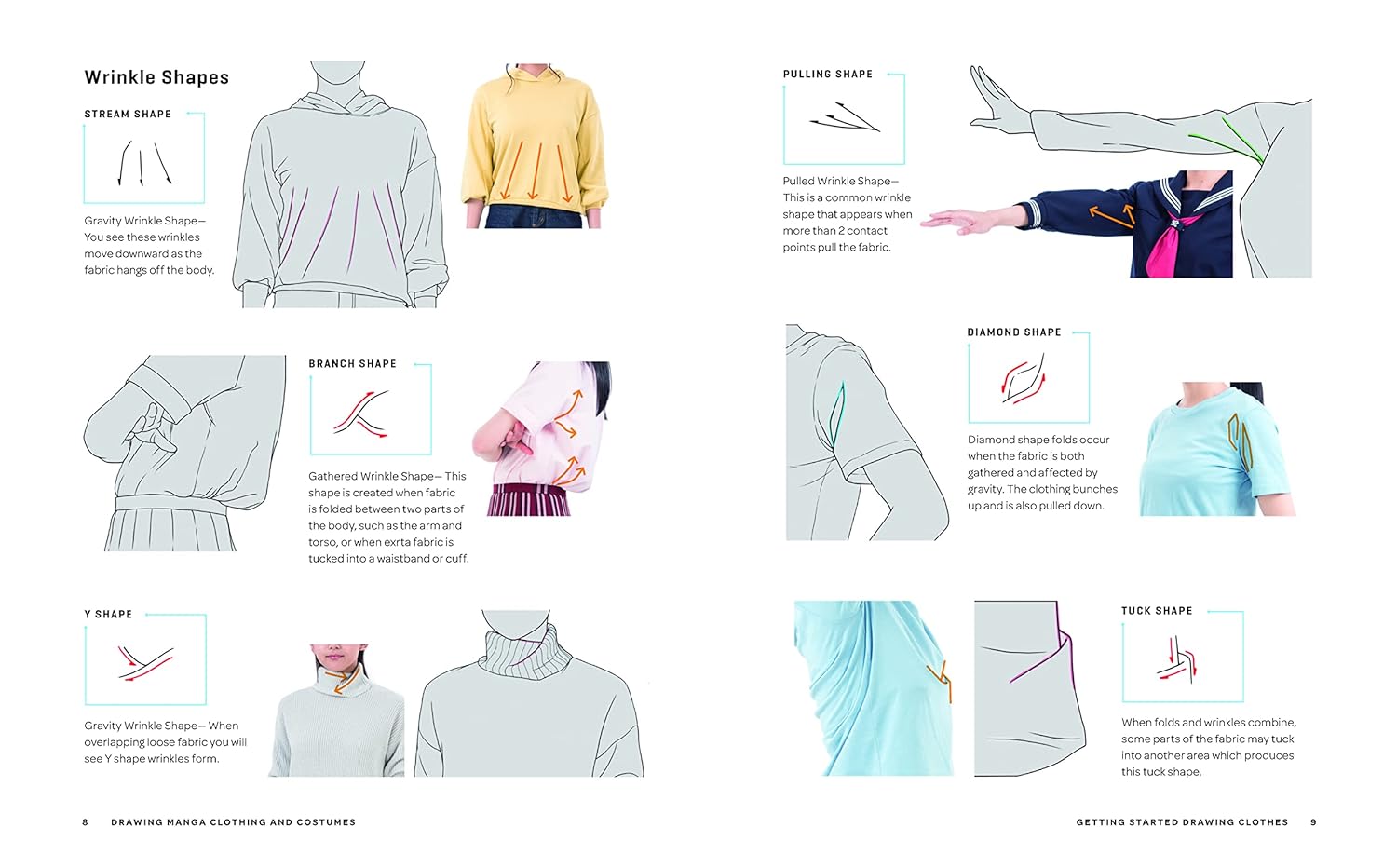
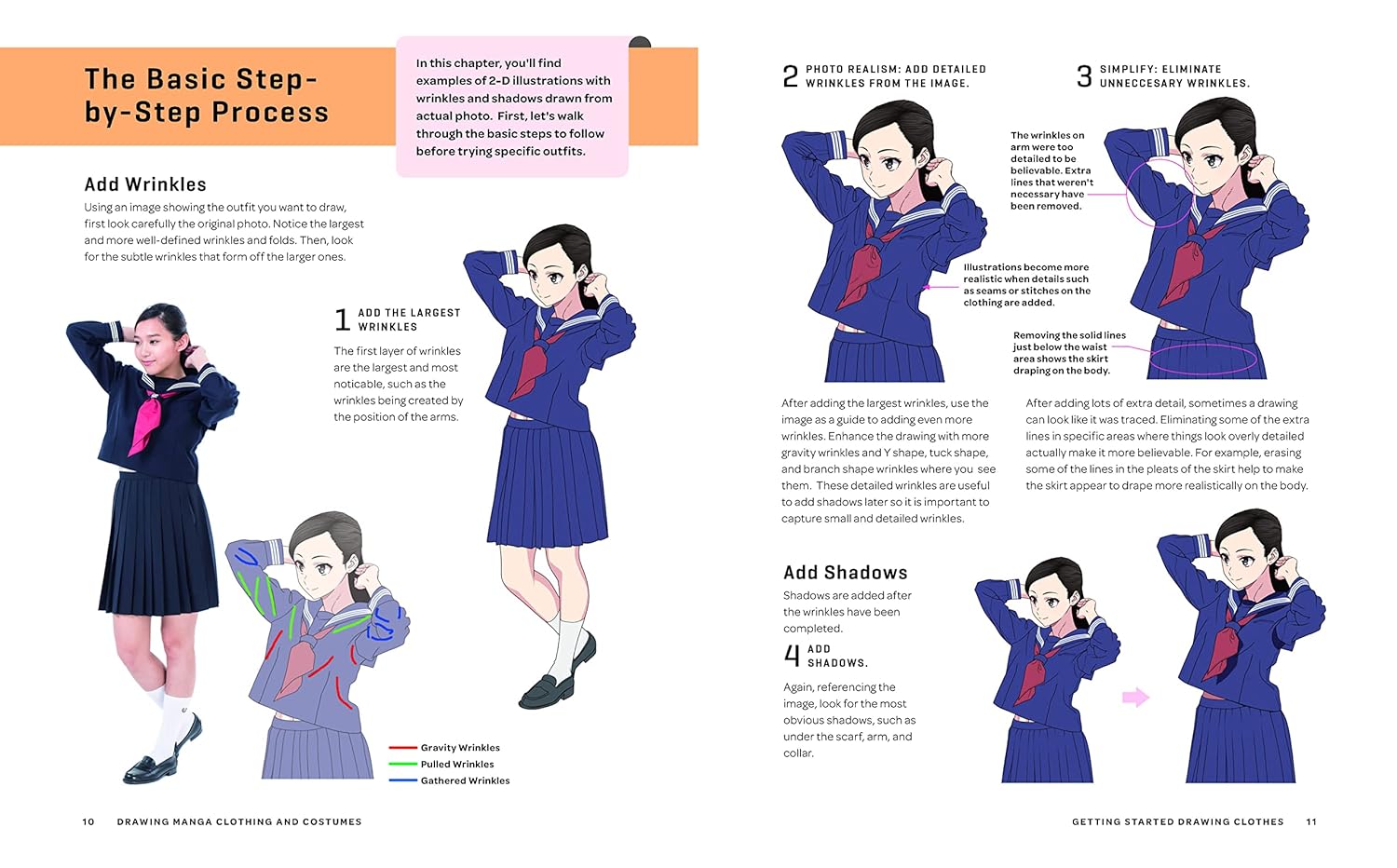
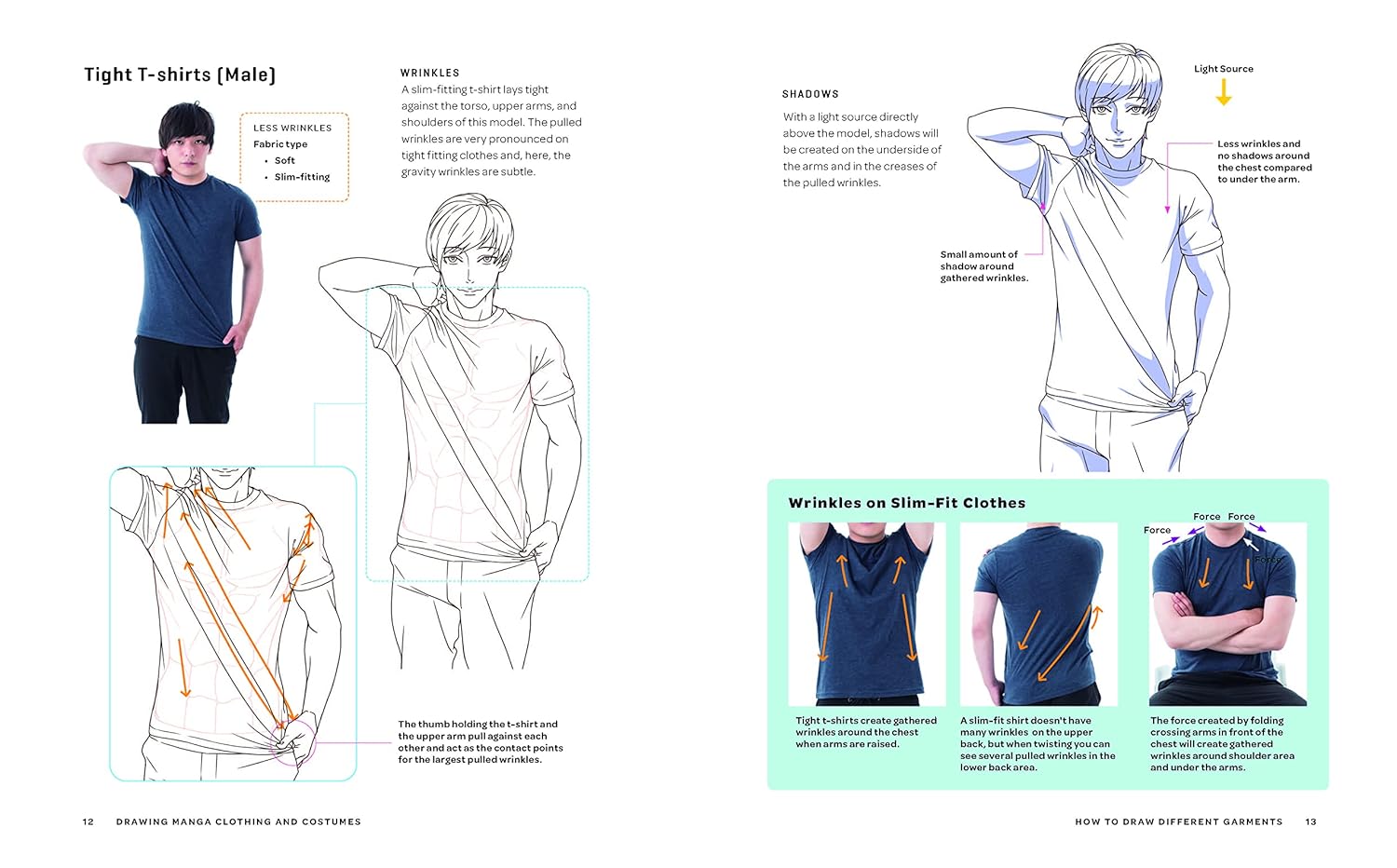
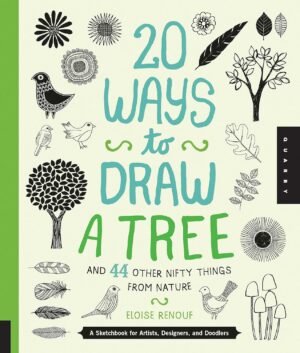
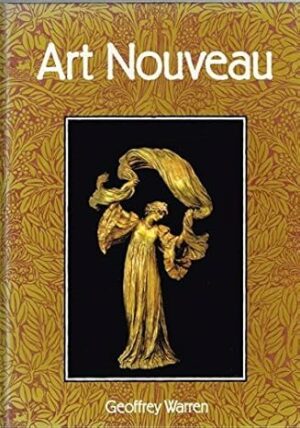
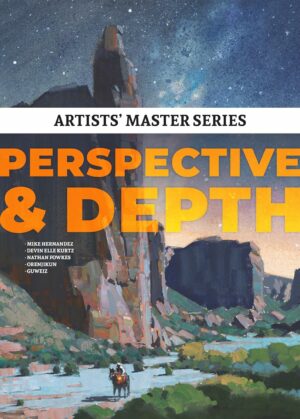
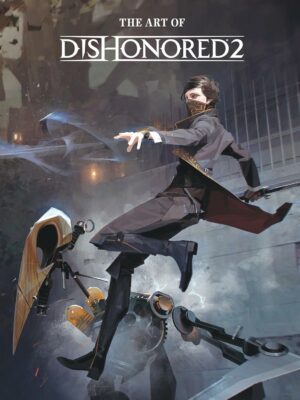

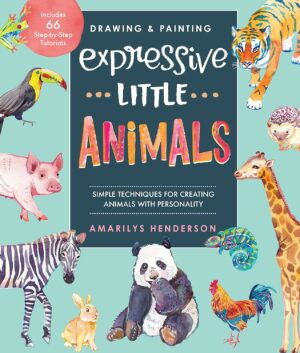

Hanna –
It took about a month to arrive (4 weeks) just as stated, and ARAMEX had a few difficulties to ship it all the way here, but it was worth it!
The book arrived in perfect condition, and it’s very informative to learn more about clothing. In addition to that, they also mention lighting and perspective too!
Overall, I recommend this book as long as you’re patient enough to wait! <3
Kelly –
Yet another reference book to add to my collection. I thoroughly enjoyed the detail and plethora of references put into this book. Just about every type of clothing you can think of is features and the accompanying photos are invaluable. It’s nice to get the direction lines and explanation of what is happening but having the photos gives depth to everything. Highly recommend this for any character artist whether you’re starting from scratch or brushing up on the basics.
Nick –
I love this book’s approach. It very adequately describes shadows, fabric types, wrinkles, folds, etc. It uses real-life examples as reference images and translates them to Manga art style. The illustrations are great, and the information is easy to absorb. If you’re drawing male or female characters, it has plenty of reference.
Neon West –
It is really useful, my outfits have improve drastically since I practice it.
Dennis Dharamrup –
Book came a little bent. I don’t know whose fault it was the shippers or distributor. That’s why I gave it 4 stars. But the content of the book is very good for a beginner like myself
anonyme –
À la recherche d’un livre sur le dessin d’habits pour les personnages de BD, j’ai acheté ce livre qui présente de nombreuses astuces pour dessiner les plis de tissu, mais aussi comment donner du volume grâce aux ombres etc… Un trés bon livre.
Caroline Hill –
I wish I had this book years ago when I was figuring out how to draw clothing folds. The physics and gravity of clothing folds can be hard to follow, and I’ve found they’re usually one of the last things an artist really manages to figure out. This book is an excellent resource in de-mystifying the process. The first part details types of folds, how to recognize the physics, and how to recreate them. It’s a fairly quick overview, but the breakdown is very useful, and it works as a good foundation for the rest of the book. Chapters quickly move into types of clothing and how they work based on environment, interaction, and the weight of the fabric itself. It’s also a great introduction in how to use photo references while drawing. Photo reference books can be difficult to start into sometimes, since it’s just a bunch of photos and a note wishing you luck. This book includes the photos and the drawings, with occasional notes on what to look for when using references. There’s a very brief section on shading, followed by practice pages that allow you to try placing folds on the sample images in the book. Recommended for artists who have moved past the beginner stage.
Ed –
Me parece muy buen material de apoyo y referencia para aquellos que nos adentramos en el dibujo.
Sternwolf –
Hilft einen sehr